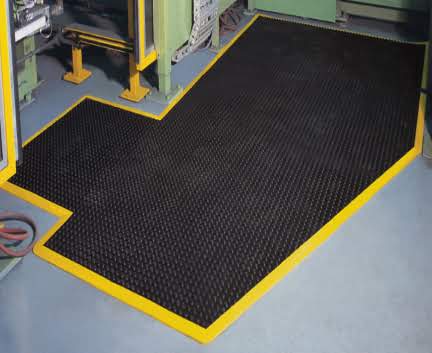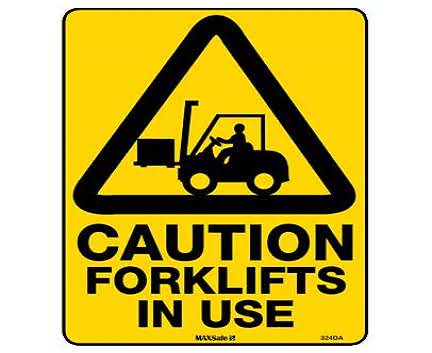How to Run an Accident-Free Warehouse

- Home
- News
How to Run an Accident-Free Warehouse
![How to Run an Accident-Free Warehouse teaser]()
27 Jun 2018
Safety guidance and features are all too often overlooked. This leads to a loss of work hours, a loss of productivity and potential prosecution from employees or external agencies. Prevention is always better than cure. When it comes to running an accident-free warehouse there are a number of steps you can take. You need to make sure that you ensure the safety of the people that work for you as well as your assets. Clear and correct signage, promoting good lifting technique, as well as anti-slip mats for fall prevention, are all excellent examples of how you can prevent an accident occurring. In this blog post we discuss some more ideas to make your warehouse an accident free zone.

Picture: Ergo-Tred Anti-Fatigue Matting
Training
Training is simple to implement. It can be outsourced if you don’t want the added pressure of implementing a training schedule within your business. A training schedule doesn't need to be a big task. You could allocate the duty to an existing role or create a new role. A training schedule needs to cover safe use of equipment and machinery. It should also cover what to do if something goes wrong. Some of this can be done as part of an induction phase for new workers and then updates can be provided periodically. It is important to keep a log of people that have carried out training. If new equipment is added then training will need to be given on its safe usage. It is important not to let people operate machinery until you are confident that they can do so safely.
Signage
The use of clear effective signage cannot be underrated. Signs are not there to teach new rules, they are there to serve as clear reminders of potential risks and hazards. Signs should be clearly visible, with eye attracting colours and a simple and clear message. Consideration should also be placed on where they are placed. For example the right height and distance from the potential hazard so the sign can be noticed before the potential hazard can occur. Tape, barriers and floor markings are all ways of further emphasising a clear warning.

Picture: Caution & Beware Sign
Safety equipment
This is two-fold. Firstly, ensuring the equipment that you have complies with all safety standards and prevents injury or risk of injury. For example, having handling equipment that doesn’t strain your employees back or providing anti-fatigue and anti-slip mats will go some way to prevent accident and injury. Secondly, even if you have taken measures in your duty to protect your employers, there is still the potential for an incident to occur. Because of this, it's important that you provide any appropriate equipment should the worst happen such as eye washers and showers. This includes procedures as to what to do should an incident occur.
Running a safe and accident-free warehouse is of utmost importance in your business. Even the smallest of incidences can have a knock on effect on the productivity and efficiency of your warehouse. Harvesting a culture of safety from the beginning and maintaining that through each point and area of the business will reduce the likelihood of adverse event occurring.
Want a safer work environment?At Backsafe Australia we stock a wide range of Anti Slip/Anti Fatigue Mats that will ensure workers safety and security. Contact us today at 1300 305 314 or send us an email at sales@backsafe-australia.com.au and we will give you the right advice on the best equipment for your business.
Back To News Stories